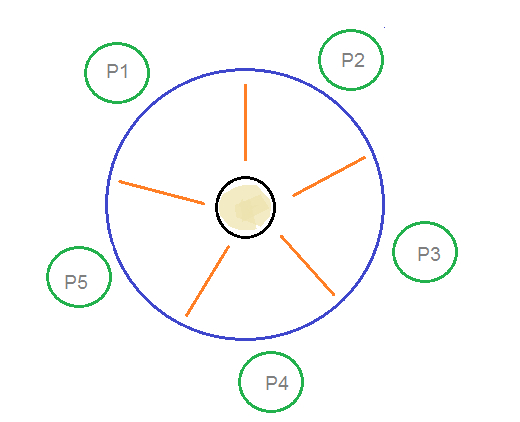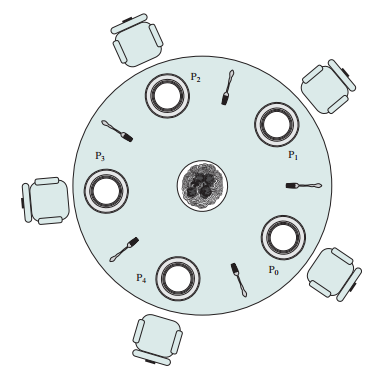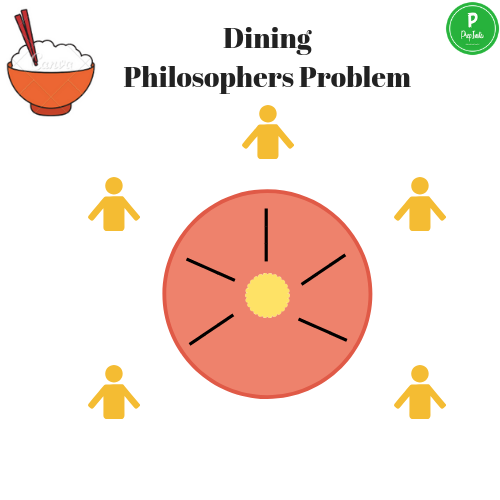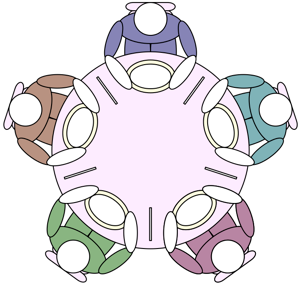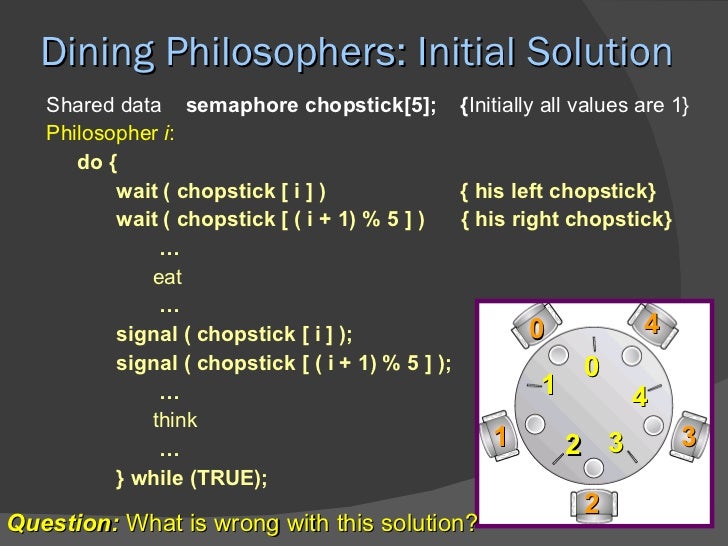Dining Philosophers Problem Solution In Os

Operating system the dining philosophers problem synchronization mutex locks and semaphores.
Dining philosophers problem solution in os. Dining philosophers problem let s understand the dining philosophers problem with the below code we have used fig 1 as a reference to make you understand the problem exactly. It was originally formulated in 1965 by edsger dijkstra as a student exam exercise presented in terms of computers competing for access to tape drive peripherals. The dining philosophers problem is another classic synchronization problem which is used to evaluate situations where there is a need of allocating multiple resources to multiple processes. In computer science the dining philosophers problem is an example problem often used in concurrent algorithm design to illustrate synchronization issues and techniques for resolving them.
Solution of dining philosophers problem. Soon after tony hoare gave the problem. Prerequisite process synchronization semaphores dining philosophers solution using monitors the dining philosopher problem the dining philosopher problem states that k philosophers seated around a circular table with one chopstick between each pair of philosophers. The five philosophers are represented as p0 p1 p2 p3 and p4 and five chopsticks by c0 c1 c2 c3 and c4.
Among them one particular question caught my attention. A philosopher may eat if he can pickup the two chopsticks adjacent to him. A solution of the dining philosophers problem is to use a semaphore to represent a chopstick. Five philosophers sitting around the table.
The dining philosopher is a classic synchronization problem as it demonstrates a large class of concurrency control problems. There is one chopstick between each philosopher.



